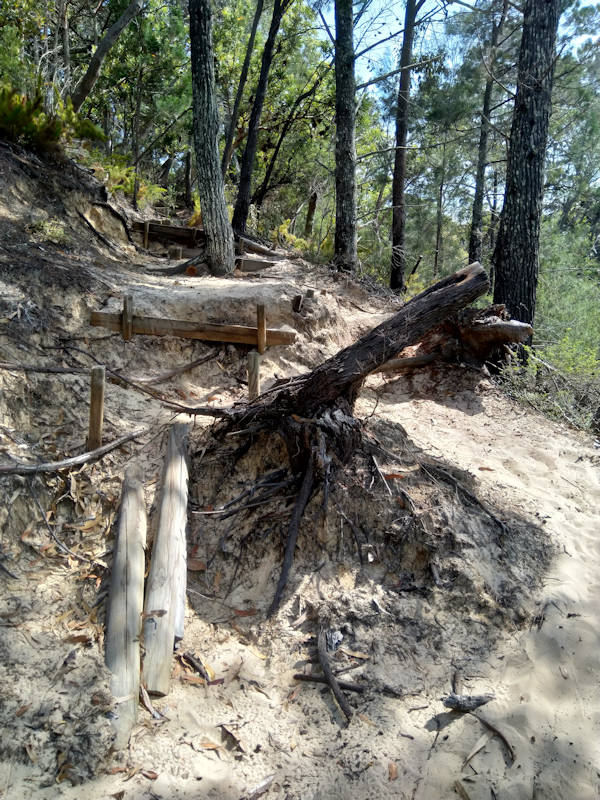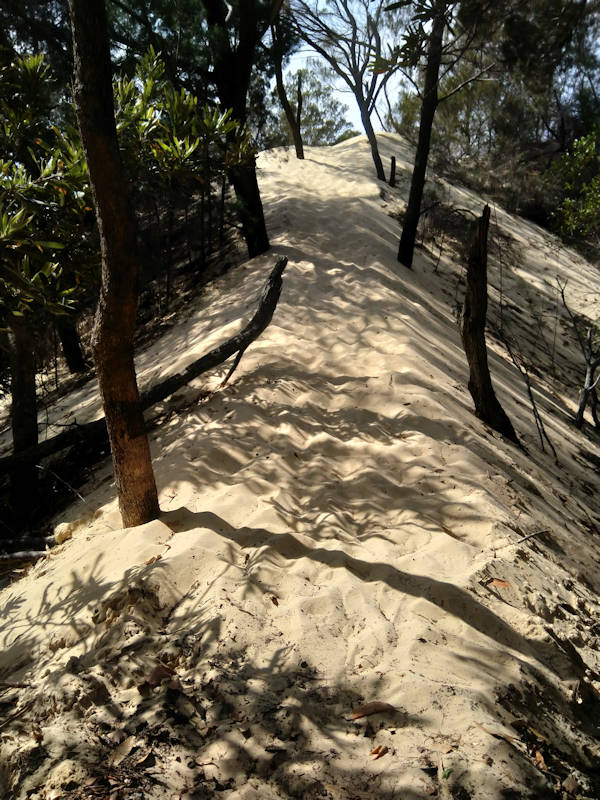Located in Pinkenba on the Brisbane River, the brown sign for Tangalooma Departures takes you to the ferry terminal to travel to Moreton Island, specifically to Tangalooma Resort.
It should be without saying, the departure terminal is not the focus for this destination. It is the beautiful Moreton Island and the Tangalooma Resort the ferry takes you to.
Tangalooma is a surreal escape, a get-a-way close to Brisbane where you feel like you could be somewhere in Tropical North Queensland. You could be at Airlie Beach or Port Douglas, yet you are an hour from Brisbane across the bay.
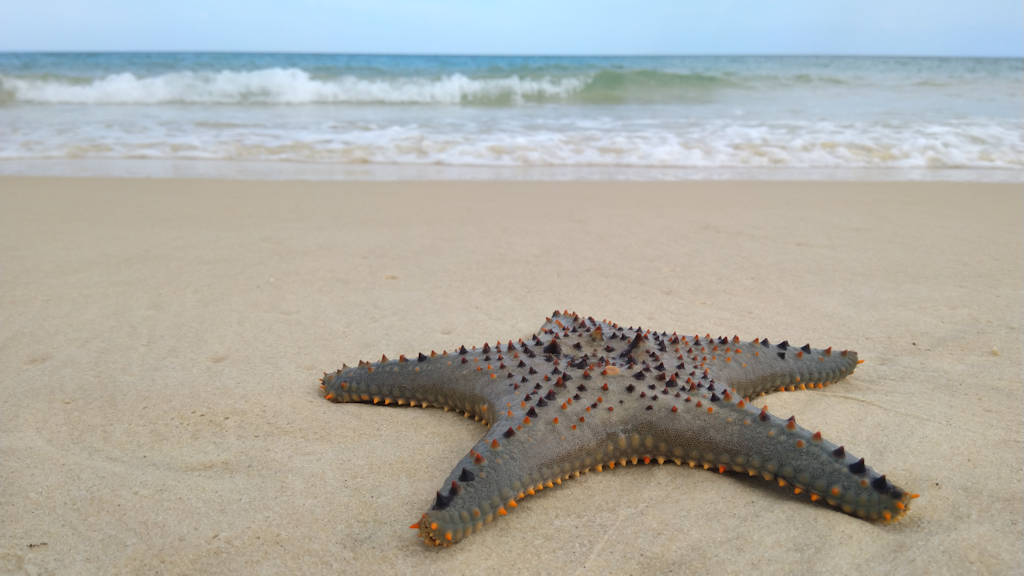
The ferry service is specific to Tangalooma Resort, travelling between Pinkenba to the Tangalooma Jetty three to four times a day. The cost for the ferry is for a return trip and is booked when you get accommodation, day cruise, or packages being offered.
Tangalooma Ferry
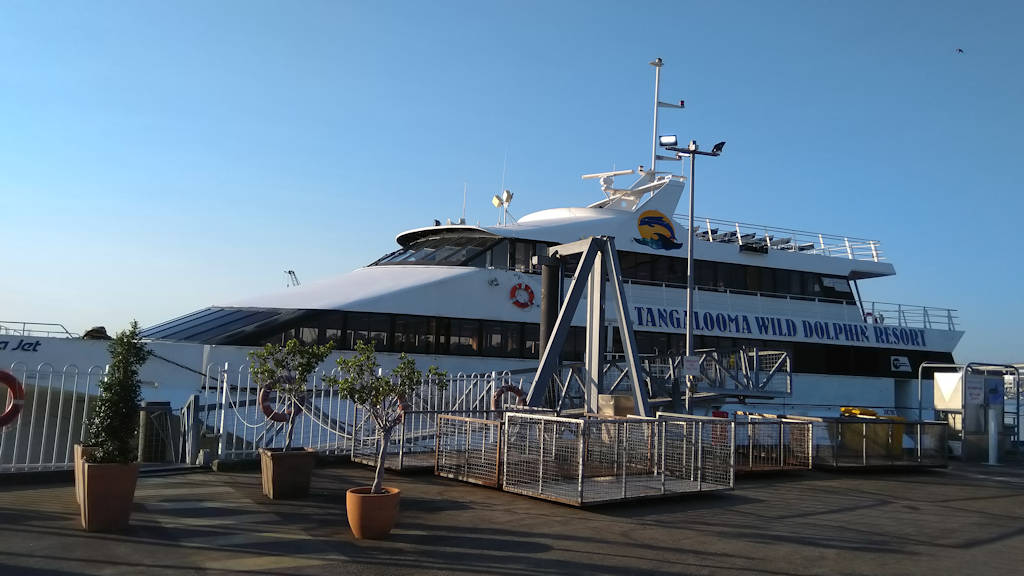
The ferry departs Pinkenba scheduled at 8am, 10am, and 12pm. An additional service leaves at 5pm on the weekends. In the other direction, the ferry departs Tangalooma 10am, 2pm, 4pm, and the additional service on weekends at 7pm.
Leaving the wharf, the ferry travels around 10 kilometres down the Brisbane River, passing Fort Lytton National Park before exiting into Moreton Bay.
Once in the open Moreton Bay waters, the ferry picks up speed. The trip to the island was quite smooth on the calmer morning bay water. The tri-haul ferry cuts through the waves for a smoother ride. Our return trip was in the afternoon and rougher and the ferry rocked more.
As you get closer to Moreton Island, the excitement builds. Blue skies peppered with fluffy clouds and the sun glimmering off the waves of the water, the island in the background with a contrasting sand drift – I was already in holiday mode before we reached the jetty.
Tangalooma Accommodation
There are several places to stay at Tangalooma. The main one being Tangalooma Resort itself with a variety from budget rooms with the basics, units with kitchenettes, to multiple room self contained apartments and villas with kitchens.
We stayed in one of the apartments with views from the balcony overlooking the beach and jetty. It had plenty of space over two floors to share with friends, making it quite economical for a good quality apartment.
As an alternative to resort accommodation, there are private homes on the hill above the resort with stunning views and great value at the right times. You can find Tangalooma accommodation on Stayz.com.au and other stays websites such as Airbnb.
Accommodation Options
Looking for somewhere to stay at Tangalooma? Have a look at these options from our partner Booking.com.
- Moreton Island Villas and Apartments – several options with 2-3 bedrooms for 4-7 people. Near the jetty and dolphin feeding location, 2 swimming pools, apartments look over the beach and jetty.
- Beach Front Villa – 3 bedrooms for up to 6 people, a few steps from the beach and an outdoor swimming pool
- Coral Crescent – 4 bedrooms for up to 10 people, perched on the hills with stunning views, 300m from the beach, 2 swimming pools, bar, restaurant, fully self contained.
- Villa 15 Tangalooma Resort – 3 bedroom self contained villa for up to 6 people, set on the beachfront. Outdoor swimming pool
- Villa 21 Tangalooma – 3 bedroom self contained villa for up to 8 people including bunks, set on the beachfront. Outdoor swimming pool
- Villa 31 Tangalooma Resort – 3 bedroom self contained villa for up to 9 people (9th is a living room sofa bed)
See a full list of accommodation options available at Tangalooma with Booking.com.
For more options, find your dream vacation rental on Stayz.
Tangalooma Beach
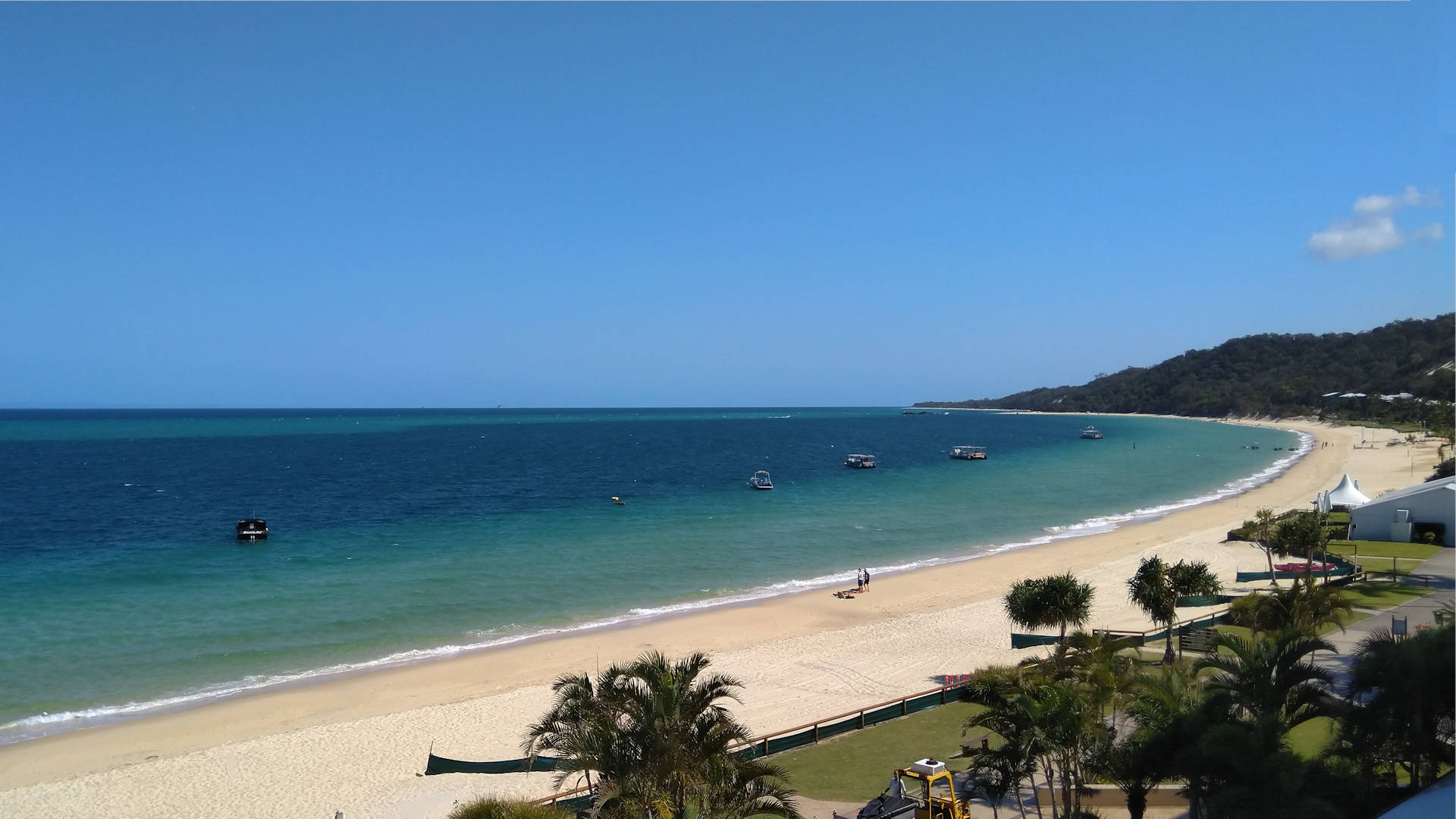
Finding some space on the beach is easy, even when there is a lot of people at the resort. Tangalooma Beach is around 1 kilometre in front of the apartments and villas and continues up to the popular Tangalooma Wrecks to the north. Other than a couple of exceptions, it is essentially sandy beach the whole perimeter of Moreton Island.
Tangalooma faces towards the bay so it is very protected from ocean swells, a great place for families to safely have a swim.
The main part of Tangalooma Beach is wider and flat enough for a game of beach cricket. As the high tide came in, we had to extend fielders into the water. Not so much that we were running out of space on the beach, it made for great opportunities for spectacular diving catches.
If lying on the sand isn’t your thing, you will have no problem finding a nice grassy spot to lay out the towel and enjoy a book there is grass with a bit of shade from a palm tree or pandanus.
Tangalooma Whaling Station
Tangalooma hasn’t always been a place for beauty, pleasure, and relaxation. In the 1950s, Whale Products Pty Ltd chose Tangalooma to build a land-based whaling station. It harpooned its first whales in June 1952 and reached its yearly quota by October, only four months after it started.
The most valuable commodity was oil from the blubber, up to 8,000 kilograms from a whale, was used to make margarine, glycerine, cosmetics, and pharmaceuticals. Other parts of the whale were used for pet food and international human consumption, meal for livestock, and fertiliser.
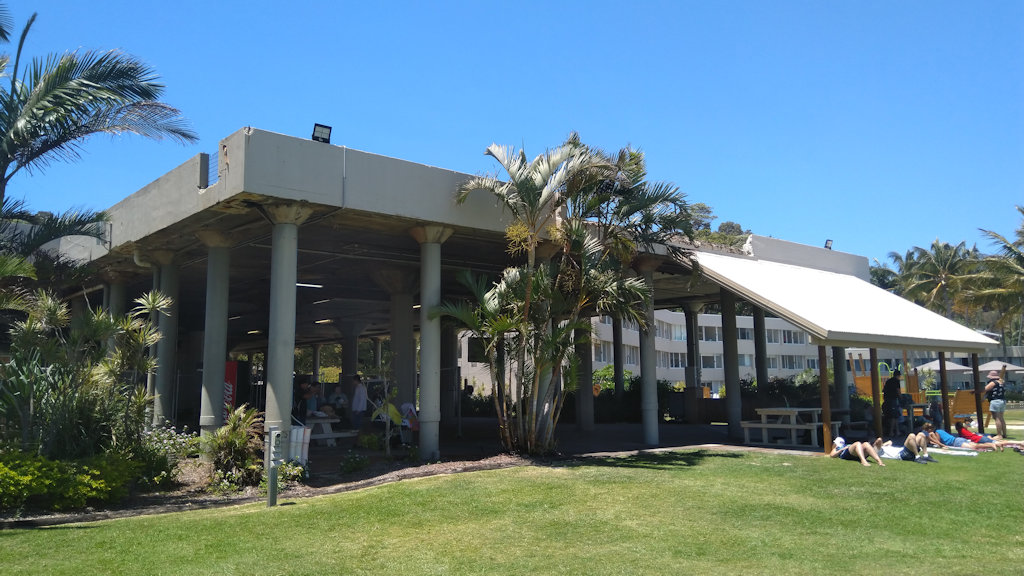
Vegetable oil introduced to Australia in the late 1950s replaced whale oil demand but by this time the Australian whale population had decreased significantly.
In 10 years of operation, the Tangalooma Whaling Station captured 6,277 humpback whales. Byron Bay station captured a further 1,146 humpbacks and an unknown number where killed by foreign whaling ships.
The numbers are even more shocking when you realise the Australian humpbacks along the east coast were reduced to 100 whales after 68 were caught in the last year before closing in 1962.
The whaling station was bought the following year by a syndicate to create Tangalooma Island Resort. In 1980, the Osborne family purchased the resort and the family still own and operate Tangalooma Resort.
The Eco Centre has film from 1965 of the operations of the whaling station, viewable in the centre. Some of the remnants are still on the island as a reminder of the decade that nearly wiped out the Australian east coast humpbacks. The deck the whales were winched up now provides shelter from the sun.
Whaling is estimated to have earnt around $32 million per year. In contrast, whale watching in Australia is estimated to be more than double per year.
Tangalooma Wrecks
Shortly after the Tangalooma whaling station was bought to turn it into a resort, a series of wrecks were sunk on the edge of a sandbank to create a safe anchorage for boat owners.
Fifteen vessels, old steam driven dredges and barges, were deliberately sunk in a line beginning in 1963 with the Maryborough.
More than a safe harbour for anchorage, the wrecks at Tangalooma are a popular feature on Moreton Island to visit.
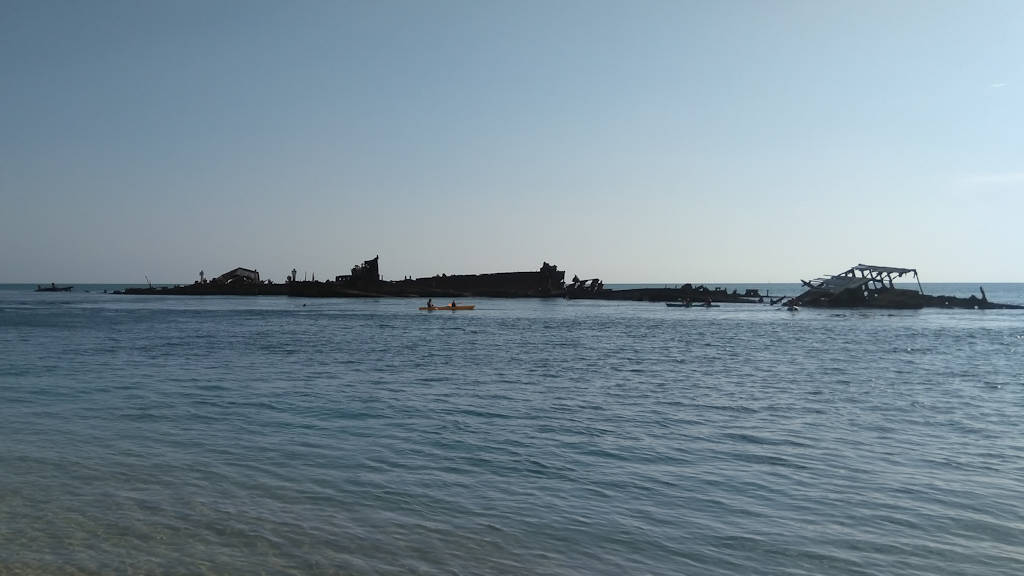
The rusting hulls have created a reef with coral forming and bringing in marine life, making a great location for snorkelling and shallow diving.
As the wrecks age they are corroding and collapsing, similar to the Gayundah Wreck across the bay in Redcliffe. The tops of the wrecks were cut down years ago for safely concerns, along with signs advising against climbing on them.
Cutting the tops off the Tangalooma wrecks has reduced the visual appear above the water but underneath is just as magnificent and majestic. I’m not a diver but it has to be one of the more accessible reef snorkelling locations close to Brisbane.
The water can alter drastically depending on the weather, tides and currents of the water. The best combination is when the water is clear, the day is sunny, and the tidal flow is minimal. Unfortunately, when the water is a little choppy, visibility can reduce significantly and be difficult to see much at all.
We had the experience of both extremes, beautiful clear days with high visibility in the water, the next day becoming overcast, choppy, and full of debris in the water making visibility low and colours looking lacklustre. If you have a good day, take the opportunity when it was there.
The wrecks are north of the resort, around 1.8 kilometres walk from the resort hotel along the beach to get there.
Desert Walk

Moreton Island is the third largest sand island in the world so there is more to explore than the beach, wrecks and its artificial reef, and resort activities. At the back of the resort is the start of a bush walking trail that leads to a large sand basin called Moreton Island Desert.
The walking track starts by walking up the stairs behind the apartments near the Jetty. A side track leads off to the right with a sign “Bushwalking Track” and another indicating it is a 2km walk to “The Tangalooma Desert”. Which is the proper name, I’m unsure.
The walk is moderate for most part, starting off with a glimpse of Tangalooma Beach and the resort on the way. The track is basic but is marked well enough to follow.
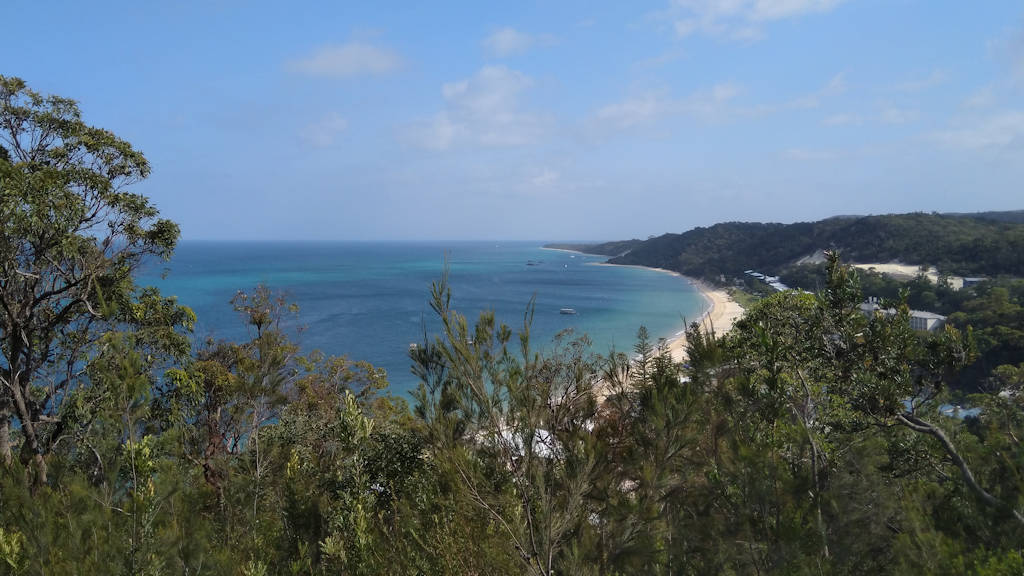
Our GPS tracking wasn’t completely accurate for distance, indicating we had travelled further than what we had. After 30 minutes and 1.6 kilometres of walking, we reached a junction point. The junction continues for the last 400 metres to the desert and an alternative path to return to Tangalooma.
It is only a few minutes later a glimpse of the desert is presented. From here the track becomes more challenging with a gully that needs to be crossed.
It isn’t difficult but the descent into the gully was eroded and some care was required. Once at the bottom of the gully, all that is required is to climb back up the other side.

Eroded track along the Bushwalking Trail to the Moreton Island Desert from Tangalooma 
Climb out of a gully before reaching Moreton Island Desert
Once the sand hill out of the gully is conquered, you are greeted with a view across the Moreton Island Desert (or Tangalooma Desert if you prefer). We were standing at the top of a sand hill on the western side of the basin and admired the view. It was fairly hot and only planned for a short walk but we could have continued and crossed the sand basin and onward to the Rous Battery, however, that is another 8 kilometres or so one way.
Heading back, crossing the gully again, we reached the junction and took the alternative route. It lead to a marine signal sign with the trees cleared down to the shoreline, I presume to ensure the marine sign remains visible. There is vegetation but no tall trees, providing a clear view in the other direction too. The track follows down the hill along the clearing to then follow the beach back to Tangalooma.
To Get There
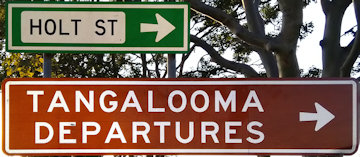
Tangalooma Departures is on the north side of the Brisbane River, east of the city.
Heading east on Kingsford Smith Drive beside the Brisbane River, continue along crossing under the Southern Cross Way and then the Gateway Motorway. After crossing under the Gateway Motorway, continue for another 900m and turn right into Holt St with the brown sign a little before it. Follow Holt St for 1.6km all the way to the end and the entrance to the Tangalooma Terminal is straight ahead.

